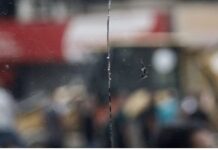Nader Durgham
Middle East Eye / September 5, 2024
Amnesty analysis comes as Netanyahu insists on keeping Israeli troops in Gaza.
Israel’s destructive creation of a “buffer zone” in the Gaza Strip could amount to a war crime, Amnesty International has found.
An analysis conducted by the human rights group found a “pattern along the eastern perimeter of Gaza that is consistent with the systematic destruction of an entire area”.
“These homes were not destroyed as the result of intense fighting,” said Amnesty’s Erika Guevara-Rosas. “Rather, the Israeli military deliberately razed the land after they had taken control of the area.”
Amnesty has referred to this campaign as “wanton destruction”, or the destruction of civilian property seized by an adversary in the absence of military necessity.
Israel says the destruction is a security measure following the Hamas-led 7 October attack.
Cleared land along Gaza’s eastern boundaries has ranged from 1km to 1.8km in width.
The expanded “buffer zone” covers roughly 58 sqkm, or 16 percent of the entire Gaza Strip, and saw the destruction of 90 percent of the buildings in the area, or over 3,500 structures by May of this year.
Amnesty says the mass destruction of buildings and agricultural lands along the eastern boundaries amount to collective punishment of Palestinian civilians, even if civilian property may have been used by armed groups in the past.
Israel has been accused of forcibly razing Gaza’s bordering areas ever since the early months of the war, with the UN High Commissioner for Human Rights saying these acts may constitute war crimes back in February.
Osama Hamdan, a Hamas official based in Lebanon, said in January that Israel was “looking to establish a security belt along the borders of the strip by levelling entire residential blocks and by bulldozing farms and civilian infrastructure”.
“This is a crime and a blatant aggression against our land and our holy places,” he added, saying that “our people and our resistance will foil these attempts.”
Netanyahu’s plans
The report comes after Prime Minister Benjamin Netanyahu insisted Israel would continue its presence in the Philadelphi Corridor, a narrow strip of land along Gaza’s border with Egypt.
The Philadelphi Corridor is a buffer zone that was demilitarized under Israeli-Egyptian agreements in 1979 and 2005, but was occupied by Israeli forces in May.
In two separate news conferences, one in Hebrew and one in English, Netanyahu said the buffer zone has been used by Hamas to smuggle weapons into Gaza, claiming that Israeli control over it would ensure that acts like the 7 October attack would not happen again.
His government is also reportedly insistent on keeping its forces in the Netzarim corridor, a road built by the Israeli army during the ground invasion of Gaza that essentially cuts the Palestinian enclave in two.
The route, which now consists of several military bases, has been used by Israeli forces to monitor and control the movement of Palestinians between northern and southern Gaza and launch some military operations.
Other observers warn that these plans may go even further.
Itay Epshtain, special advisor at the Norwegian Refugee Council, posted an image on X which shows what he said was Israel’s plan for a post-war Gaza.
The image and plan was shared by Israel’s diaspora affairs minister, Amichai Chikli, back in January.
Chikli is part of Netanyahu’s Likud party.
The image shows a wide green area that expands the “buffer zone” Amnesty reported on used as a security perimeter, while Gaza’s cities would be divided by two corridors, Netzarim in the north and another one in the south.
Gaza City would be left uninhabited while Khan Younis, Rafah and Deir al-Balah would be under Israeli control with the possibility of employing a local civilian administration.
According to Epshtain, “Netanyahu opened the floodgates”.
Nader Durgham is a Lebanese journalist based in Beirut












